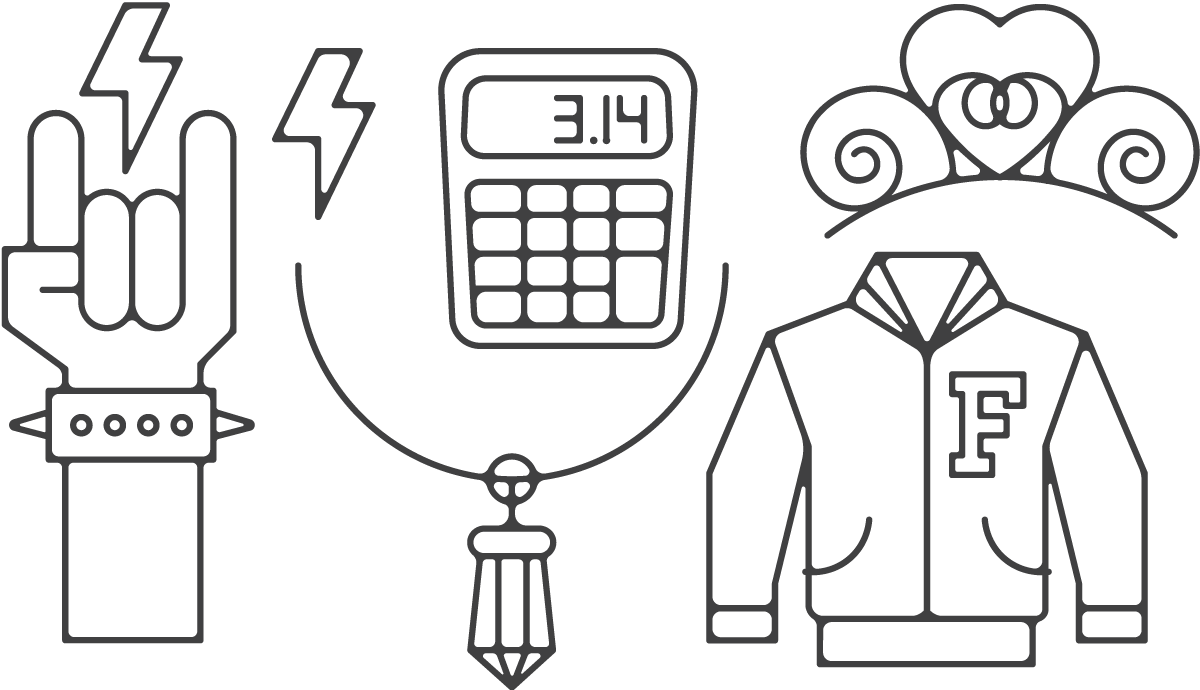Every business has a brand. Every brand has a personality. Every personality has a peer group. The question is, how does your brand fit in and how does it stand out?
Because the relational side of a business (to its market space and its customers – both current and prospective) is what comprises brand, it is easy to view brand as having a personality. Personalities are what drive and dictate the various social spheres we each have in our lives. Some personalities mesh well, and some don’t. It is through this process of engagement that like-minded personalities form similar groups, or better known as “peer groups”.
Brands express personality through what they say (content) and how they say it (tone). But the brand’s personality can also be expressed in visual signals as well. How the brand looks and the overall vibe that it has strongly communicate its personality. Would the brand dress in khaki shorts and sandals or a nice suit and tie. What kind of hairstyle would your brand have? Just like our own personalities are the sum of our looks, behavior and mindsets, a brand is comprised much in the same way. And because our minds compartmentalize these sums to organize our social spheres, we do the same for all of the brands that surround us every day. We bucket them by their business market and then by their brand personality peer groups. We tend to generalize these groups and associate them through stereotypes that are formed by the majority of brands in the market.
The 1985 movie The Breakfast Club is a great example in film about really highlighting various stereotyped peer groups that every generation can associate with. Yes, the specific hairstyles, fashion and context will change every generation, but the general stereotypes won’t. You have the socialites, the nerds, the jocks, the delinquents, and the weirdos. Some of these peer groups can function at a party together, but clearly some can’t — or refuse to. A part of this reason is that people not only associate with like-minded people, but also with ones that share similar traits. The same thing goes with businesses. They fall into a business or market category which – for the most part – has a generalized stereotype, and so a good portion of that stereotype (and the association the audience has with it) is transferred onto the brand. If your business was a character in The Breakfast Club, which peer group would it be associated with? The athlete? The princess? The academic? The rebel? The obscure?

Now being stereotyped isn’t necessarily a bad thing for a business. It is by this method that your audience can be drawn to you and connect with you. That is how we govern our social lives and the same goes for brand. If you are an agriculture brand, you are probably going to be associated with most of the other agriculture brands that make up that market sector. And that sector may (as a whole) be dominated by (example) the Rancher peer group. And as a stereotyped demographic, the assumption is that there is a similar mindset and lifestyle, and good brands know how to strategically align with that peer group. Brands can capitalize on the stereotypes within their market space to resonate well with the stereotyped audience demographic they are trying to reach. However, it also needs to standout and be distinctive.
In the movie, we can see variances within those stereotyped characters as the movie progresses. The tough guy delinquent shows a soft side. The reclusive weirdo does warm up and come out of her shell. The exclusive socialite reveals that she can be more accessible to those around her. The film is a considered a cultural classic because it gave an in-depth view of our stereotypes and how one can overcome its constraints to reach other stereotypes… through their minor detractions from the very stereotypes that were confined to. And the same goes for your brand.
It is through all of the expressions of your brand’s personality that you can be distinct from the rest of the pack in your peer group. Just like how your personality is slightly different from the rest of your inner circle, brands can use their verbal and visual signals to stand out a little from the rest. By finding ways through what you say and how you say it, your business can stand apart within the group, without standing apart outside the group.

